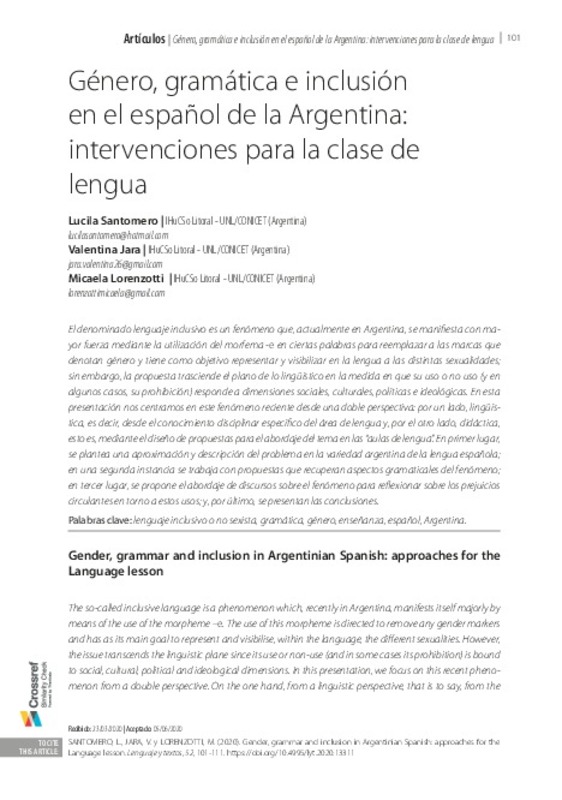JavaScript is disabled for your browser. Some features of this site may not work without it.
Buscar en RiuNet
Listar
Mi cuenta
Estadísticas
Ayuda RiuNet
Admin. UPV
Género, gramática e inclusión en el español de la Argentina: intervenciones para la clase de lengua
Mostrar el registro completo del ítem
Santomero, L.; Jara, V.; Lorenzotti, M. (2020). Género, gramática e inclusión en el español de la Argentina: intervenciones para la clase de lengua. Lenguaje y Textos. 0(52):101-111. https://doi.org/10.4995/lyt.2020.13311
Por favor, use este identificador para citar o enlazar este ítem: http://hdl.handle.net/10251/161014
Ficheros en el ítem
Metadatos del ítem
| Título: | Género, gramática e inclusión en el español de la Argentina: intervenciones para la clase de lengua | |
| Otro titulo: |
|
|
| Autor: | Santomero, Lucila Jara, Valentina Lorenzotti, Micaela | |
| Fecha difusión: |
|
|
| Resumen: |
[EN] The so-called inclusive language is a phenomenon which, recently in Argentina, manifests itself majorly by means of the use of the morpheme –e. The use of this morpheme is directed to remove any gender markers and has ...[+]
[ES] El denominado lenguaje inclusivo es un fenómeno que, actualmente en Argentina, se manifiesta con mayor fuerza mediante la utilización del morfema -e en ciertas palabras para reemplazar a las marcas que denotan género ...[+]
|
|
| Palabras clave: |
|
|
| Derechos de uso: | Reconocimiento - No comercial - Sin obra derivada (by-nc-nd) | |
| Fuente: |
|
|
| DOI: |
|
|
| Editorial: |
|
|
| Versión del editor: | https://doi.org/10.4995/lyt.2020.13311 | |
| Tipo: |
|








